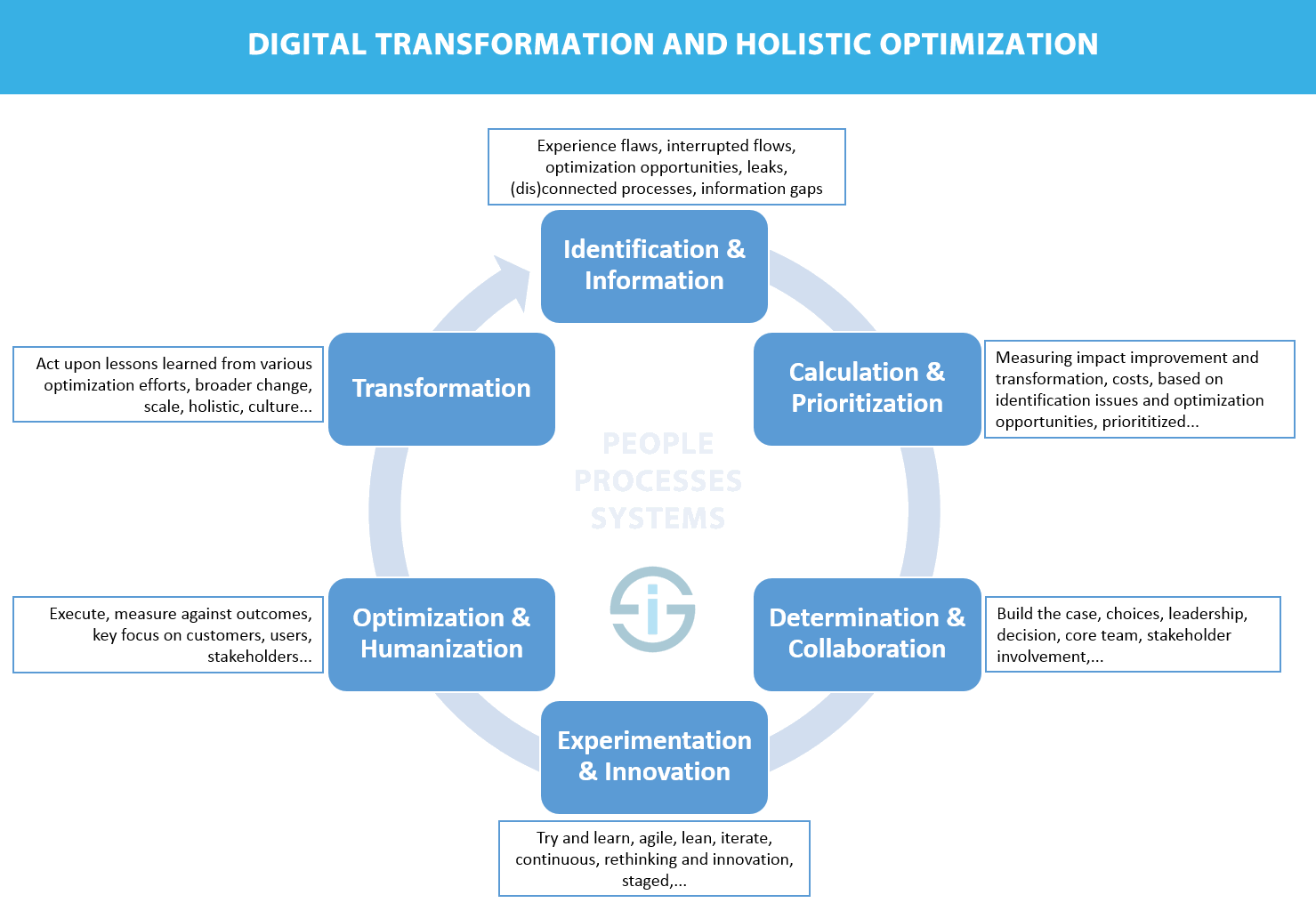Embark on a journey of digital transformation with DigiLife Digital Transformation Process Optimization. This article delves into the intricacies of optimizing processes within the DigiLife framework, shedding light on key challenges, benefits, strategies, and more.
As we explore the realm of digital optimization, we uncover how organizations can elevate their operations and drive efficiency through targeted enhancements.
DigiLife Digital Transformation Process Optimization

At DigiLife, digital transformation refers to the strategic integration of digital technologies across all aspects of the organization to fundamentally change how business is conducted and deliver value to customers.
Key Challenges in Optimizing Digital Transformation Processes
Organizations often face various challenges when trying to optimize their digital transformation processes. Some of the key challenges include:
- Lack of clear strategy and vision for digital transformation.
- Resistance to change from employees and stakeholders.
- Integration issues with existing legacy systems.
- Data privacy and security concerns.
- Skills gap in the workforce for implementing new technologies.
Successful Digital Transformation Projects within DigiLife
Several organizations have successfully implemented digital transformation projects within the DigiLife framework. One notable example is a retail company that utilized data analytics to personalize customer experiences and optimize inventory management. This not only improved customer satisfaction but also increased operational efficiency and revenue.
Benefits of Optimization
Optimizing digital transformation processes can bring numerous benefits to organizations, leading to increased efficiency, productivity, and overall performance. By streamlining operations and leveraging technology effectively, companies can stay competitive in today's fast-paced digital landscape.
Improved Operational Efficiency
Optimizing digital transformation processes can significantly enhance operational efficiency within an organization. By automating repetitive tasks, reducing manual errors, and improving workflow management, companies can save time and resources, allowing employees to focus on more strategic initiatives. For example, implementing a centralized data management system can streamline data access and analysis, leading to faster decision-making processes and improved business outcomes.
Cost Savings and Resource Optimization
Optimizing digital transformation initiatives can also result in cost savings and resource optimization for organizations. By identifying inefficiencies in existing processes, companies can eliminate waste, reduce unnecessary expenses, and allocate resources more effectively. For instance, implementing cloud-based solutions can help reduce infrastructure costs, improve scalability, and enhance data security, ultimately saving money and enabling better resource allocation.
Enhanced Customer Experience
Optimizing digital transformation processes can lead to an enhanced customer experience, resulting in increased customer satisfaction and loyalty. By leveraging data analytics and personalized marketing strategies, companies can better understand customer needs and preferences, tailor their products or services accordingly, and deliver a more personalized and seamless experience.
For example, optimizing e-commerce platforms for mobile devices can improve user experience, increase conversion rates, and drive customer engagement.
Competitive Advantage
Ultimately, optimizing digital transformation processes can provide organizations with a competitive advantage in the market. By adapting quickly to changing trends, embracing innovation, and continuously improving processes, companies can differentiate themselves from competitors and stay ahead of the curve. For example, a retail company that optimizes its supply chain management through automation and predictive analytics can respond faster to customer demands, reduce time-to-market, and gain a competitive edge in the industry.
Strategies and Best Practices
Effective implementation of process optimization is crucial within the DigiLife digital transformation framework to ensure seamless operations and improved efficiency. Integrating new technologies to streamline digital processes requires careful planning and execution. Overcoming resistance to change during the optimization phase is essential for successful transformation.
Effective Strategies for Implementing Process Optimization
Implementing process optimization within the DigiLife digital transformation framework requires a strategic approach
. Here are some effective strategies to consider:
- Conduct a thorough analysis of current processes to identify areas for improvement.
- Involve key stakeholders in the optimization process to ensure buy-in and support.
- Set clear goals and objectives for the optimization initiative to track progress and measure success.
- Implement agile methodologies to adapt to changing requirements and feedback throughout the optimization process.
- Provide training and support for employees to ensure a smooth transition to optimized processes.
Best Practices for Integrating New Technologies
Integrating new technologies is essential for streamlining digital processes. Here are some best practices to follow:
- Research and select technologies that align with the goals of the optimization initiative and the overall digital transformation strategy.
- Pilot new technologies in a controlled environment before full-scale implementation to identify potential challenges and make necessary adjustments.
- Ensure seamless integration of new technologies with existing systems to avoid disruptions in operations.
- Regularly evaluate the performance of new technologies and make updates or changes as needed to optimize processes further.
Tips for Overcoming Resistance to Change
Overcoming resistance to change is a common challenge during the optimization phase. Here are some tips to help address resistance effectively:
- Communicate the benefits of the optimization initiative and how it aligns with the overall goals of the organization.
- Involve employees in the decision-making process and solicit feedback to address concerns and make adjustments as needed.
- Provide training and support to help employees adapt to new processes and technologies effectively.
- Celebrate small wins and successes along the way to maintain momentum and motivation for the optimization initiative.
Measurement and Evaluation

Measuring and evaluating the success of digital transformation process optimization is crucial for understanding the impact of the efforts put into enhancing processes.
Designing a Measurement Framework
In order to effectively measure the success of digital transformation process optimization, organizations need to design a comprehensive framework that includes both quantitative and qualitative metrics. This framework should align with the overall goals and objectives of the optimization efforts.
- Quantitative metrics could include factors like cost savings, time efficiency improvements, error reduction rates, and increased productivity levels.
- Qualitative metrics might involve customer satisfaction scores, employee feedback on the optimized processes, and overall organizational agility.
Key Performance Indicators (KPIs)
Key Performance Indicators (KPIs) play a vital role in evaluating the effectiveness of optimization efforts within the digital transformation process. These indicators provide tangible data points that reflect the progress made and the impact on the organization.
Examples of KPIs include: conversion rates, customer retention rates, process cycle times, and employee engagement levels.
Continuous Monitoring and Adjustment
Continuous monitoring of the optimized processes is essential for ensuring sustained improvement and adaptability to changing circumstances. Organizations need to regularly review the performance metrics and make adjustments as needed to enhance the effectiveness of the optimization efforts.
End of Discussion

In conclusion, DigiLife Digital Transformation Process Optimization offers a roadmap to success in the ever-evolving digital landscape. By embracing optimization strategies and best practices, organizations can pave the way for continuous improvement and growth.
 At DigiLife, digital transformation refers to the strategic integration of digital technologies across all aspects of the organization to fundamentally change how business is conducted and deliver value to customers.
At DigiLife, digital transformation refers to the strategic integration of digital technologies across all aspects of the organization to fundamentally change how business is conducted and deliver value to customers.
 In conclusion, DigiLife Digital Transformation Process Optimization offers a roadmap to success in the ever-evolving digital landscape. By embracing optimization strategies and best practices, organizations can pave the way for continuous improvement and growth.
In conclusion, DigiLife Digital Transformation Process Optimization offers a roadmap to success in the ever-evolving digital landscape. By embracing optimization strategies and best practices, organizations can pave the way for continuous improvement and growth.





